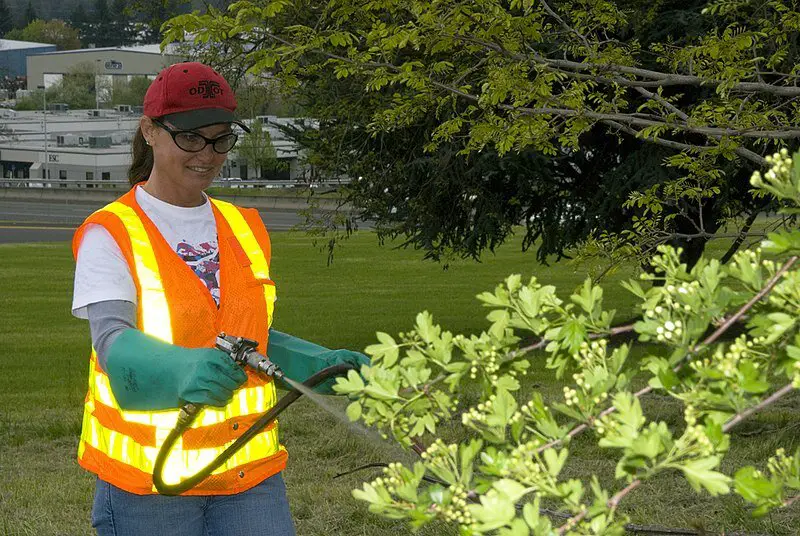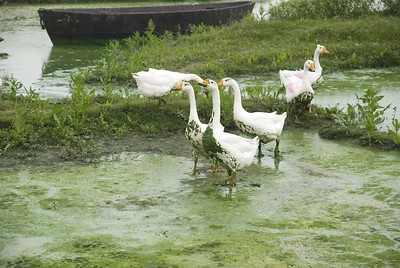5 Ways to Prevent Land Pollution Explained
Ways to prevent land pollution are; raw material substitution, habitat conservation, biodegradable packaging, effective waste management and effluent treatment, as well as renewable energy development.
This article discusses how to prevent land pollution, as follows;
1). Raw Material-Substitution (as one of the Ways to Prevent Land Pollution)
Raw materials extracted from land are used for mostly industrial purposes, and examples of them include; metals, rocks like limestone, and energy resources like coal.
Substitution of raw materials is the practice and concept of replacing conventionally-used materials in industry, with preferable ones.
An example of material substitution is the use of ash from pyrolytic waste (of wood, plant matter, coal) also called COSMOS material; in place of talc, antimony and calcite as a filler in polypropylene composites [1].
Objectives of material substitution include economic savings, and environmental conservation.
Material substitution as a strategy in environmental conservation, is the deliberate selection of materials with low environmental impacts to replace existing or conventional ones.
The practice has multiple benefits, which range from mitigating resource depletion, to the prevention of environmental degradation.
Materials with a large carbon footprint, or those which produce significant amounts of toxic byproducts as they breakdown, can be replaced with less-impactful materials that can play the same role with minimal hazard risk.
A classic example of material substitution to prevent land pollution is the use of organic biomass in place of petroleum products in the manufacture of plastics. The result of this substitution is referred to as biodegradable plastic; which when disposed can undergo natural biodegradation and be recycled in the geochemical carbon cycle.
Recyclability is an important goal when looking for alternative raw materials, as the ease of recycling is proportional to the rate at which inorganic waste is reduced in landfills (which often spill-over to cause land pollution).
The precise context and mode of substitution depend on the type of land pollution that is being prevented, which could be invasive, non-invasive, industrial, and so on.
Material substitution is a multidimensional strategy that combines soil conservation and water conservation with the maintenance of air quality. It is often carried out alongside other measures, including the upgrading of industrial equipment [3]; that are meant to improve the relationship between human activities and the ecosystem.
Beyond land pollution-prevention, there are multiple contexts in which material substitution can be discussed.
It is seen as a pillar of sustainable manufacturing, an important step required in the transformation of linear economy to circular economy, as well as in energy transition from non-renewable to renewable/clean energy resources, and in sustainable development.
2). Habitat Conservation
Habitat conservation is one of the ways to prevent land pollution.
The importance of natural habitats on the Earth's surface is even greater with the rising rates of urbanization and industrialization in most parts of the world.
These habitats, which include forests and grasslands, are crucial to the natural cycling of resources on Earth, and help to cushion the effects of human activities in adjacent areas. This explains why land pollution, urban heat island-effect, and deforestation often occur within the same area and time-frame [2].
Reforestation and afforestation are potential solutions to land pollution, meaning that pollution can be prevented in concerned areas if natural habitats are not lost in the first place.
Habitat conservation may not always involve large, established ecosystems like forests. It is part of landscape management, which aims to minimize external influence on the abiotic and biotic components of a region.
To conserve these habitats and protect landscapes, practices like indiscriminate mining and waste disposal must be controlled. The control of such practices is equivalent to prevention of pollution on the Earth's surface.
Other practices like sustainable agriculture can also be seen as measures for conserving the Earth's natural habitats.

3). Biodegradable Packaging (as one of the Ways to Prevent Land Pollution)
Biodegradable packaging is the use of materials that can undergo effective natural decomposition, to conceal and convey goods or products.
The use of biodegradable materials to package products and goods can help the environment by reducing soil, water and air pollution.
Biodegradable packaging can reduce pollution on land by ensuring that disposed materials do not cause aesthetic or chemical pollution by degrading slowly.
Because these materials are organic in composition, they can easily breakdown, without exerting excessive pressure on the environment.
Harmful gaseous pollutants are reduced as well when using biodegradable materials for packaging, as there is less need for combustion or incineration of waste. Greener methods can be used instead, such as composting which converts the disposed materials to useful additives for soil conservation [4] [5].
An example of biodegradable packaging as a way to prevent land pollution is the manufacture and use of compostable cardboard bags for groceries in place of polyethene bags.
The benefit of biodegradable packaging transcends the point of usage and disposal. It is also beneficial at the point(s) of raw material extraction and conversion/manufacturing, because organic raw materials are less-expensive and hazardous, both to extract and convert to finished products.

4). Effective Waste Management and Effluent Treatment
Waste management is helpful to reduce land pollution because it reduces the rate and extent of exposure of the Earth's surface to potentially-harmful waste materials.
One of the important aspects of waste management in industrial and municipal contexts, is the treatment of effluent or wastewater.
Wastewater treatment protects the local environment by ensuring that most of the harmful components of wastewater are removed before it is released from a given facility or containment-system.
There are various treatment methods and steps for effluents including disinfection, sedimentation, and anaerobic digestion. Some of these, like anaerobic digestion, also serve as waste-to-energy conversion processes that transform waste materials into sources of energy in the form of biofuel, that can be used for heating and electricity generation.

5). Renewable Energy Development (as one of the Ways to Prevent Land Pollution)
Concepts like renewable, clean and green energy all describe a set of alternative energy sources, systems and technologies like wind, solar, wave and tidal; which can serve as alternatives, or at least as supplements, to conventional fossil fuel energy sources.
With the rise in economic development rates and efforts across the world, alongside social conditions like overpopulation, the demand for energy for daily activities continues to increase [6].
Considering that this demand for energy is linked to more-rampant cases of land-based oil spillage and a greater prominence of power plants acting as sources of land pollution; it can be argued that the further development, expansion and adoption of less-pollution energy will help prevent degradation caused by the sector (that is; energy sector).
Renewable energy development can be implemented in combination with other measures to optimize manufacturing, agriculture and construction, with a bid to protect the environment.
Conclusion
Ways to prevent land pollution are;
1. Raw Material-Substitution
2. Habitat Conservation
3. Biodegradable Packaging
4. Effective Waste Management and Effluent Treatment
5. Renewable Energy Development
References
1). Bontempi, E. (2017). "Case Study of Raw Materials Substitution: Natural Fillers Substitution in Plastic Composites." SpringerBriefs in Applied Sciences and Technology, Raw Materials Substitution Sustainability (pp.29-61). Available at: https://doi.org/10.1007/978-3-319-60831-0_2. (Accessed 7 May 2023).
2). Emmanuel, O. (2017). "Effects of Deforestation on Land Degradation." LAP LAMBERT Academic Publishing. Available at: https://www.researchgate.net/publication/318921682_Effects_of_Deforestation_on_Land_Degradation. (Accessed 7 May 2023).
3). Lee, S.; Bi, X. (2019). "Can adoption of pollution prevention techniques reduce pollution substitution?" PLoS One. 2019 Nov 7;14(11):e0224868. Available at: https://doi.org/10.1371/journal.pone.0224868. (Accessed 7 May 2023).
4). Moshood, T. D.; Nawanir, G.; Mahmud, F.; Mohamad, F.; Ahmad, M. H.; AbdulGhani, A. (2022). "Sustainability of biodegradable plastics: New problem or solution to solve the global plastic pollution?" Current Research in Green and Sustainable Chemistry. Available at: https://doi.org/10.1016/j.crgsc.2022.100273. (Accessed 7 May 2023).
5). Song, J. H.; Murphy, R. J.; Narayan, R.; Davies, G. B. (2009). "Biodegradable and compostable alternatives to conventional plastics." Philos Trans R Soc Lond B Biol Sci. 2009 Jul 27;364(1526):2127-39. Available at: https://doi.org/10.1098/rstb.2008.0289. (Accessed 7 May 2023).
6). Surya, B.; Taibe, P.; Sariman, S.; Hernita, H.; Salim, A.; Nasrullah, N.; Hazairin Zubair, A. G. (2023). "Renewable Energy Utilization and Environmental Pollution Control in the New City Area Mamminasata Metropolitan, Indonesia." International Journal of Energy Economics and Policy, 13(1), 213–226. Available at: https://doi.org/10.32479/ijeep.13723. (Accessed 7 May 2023).





